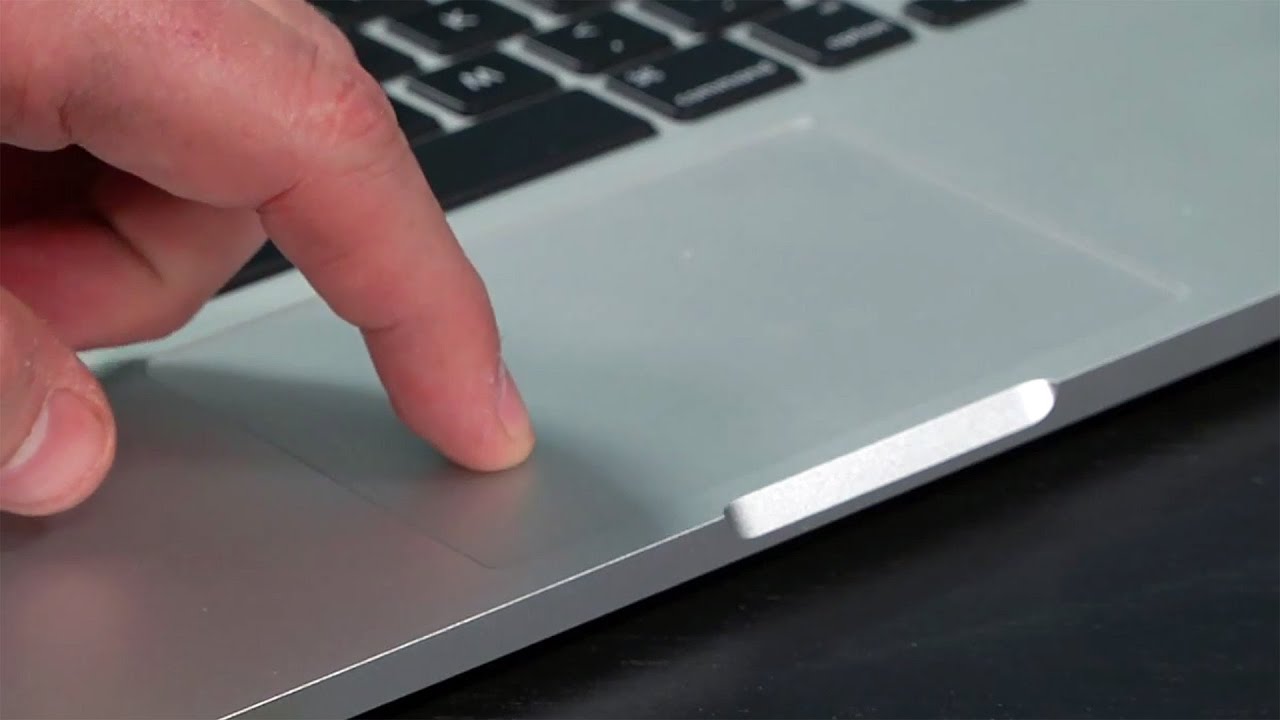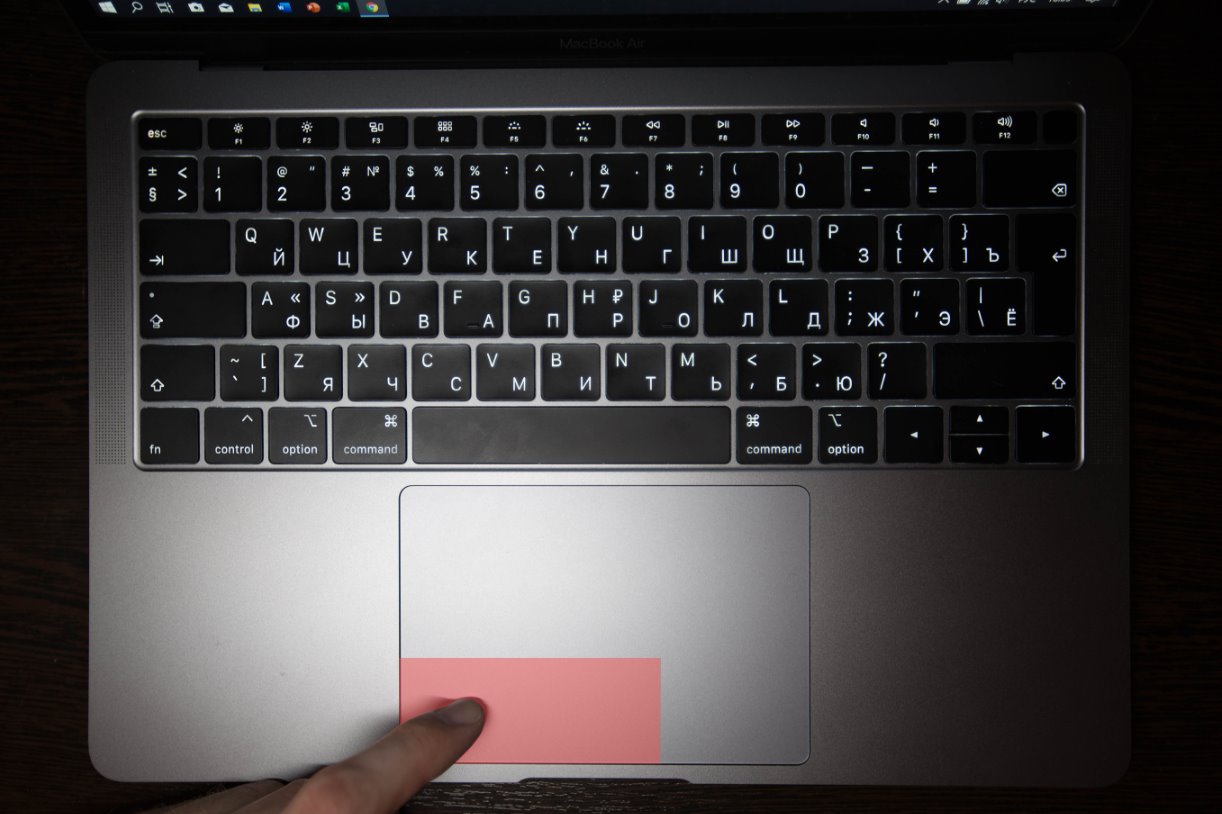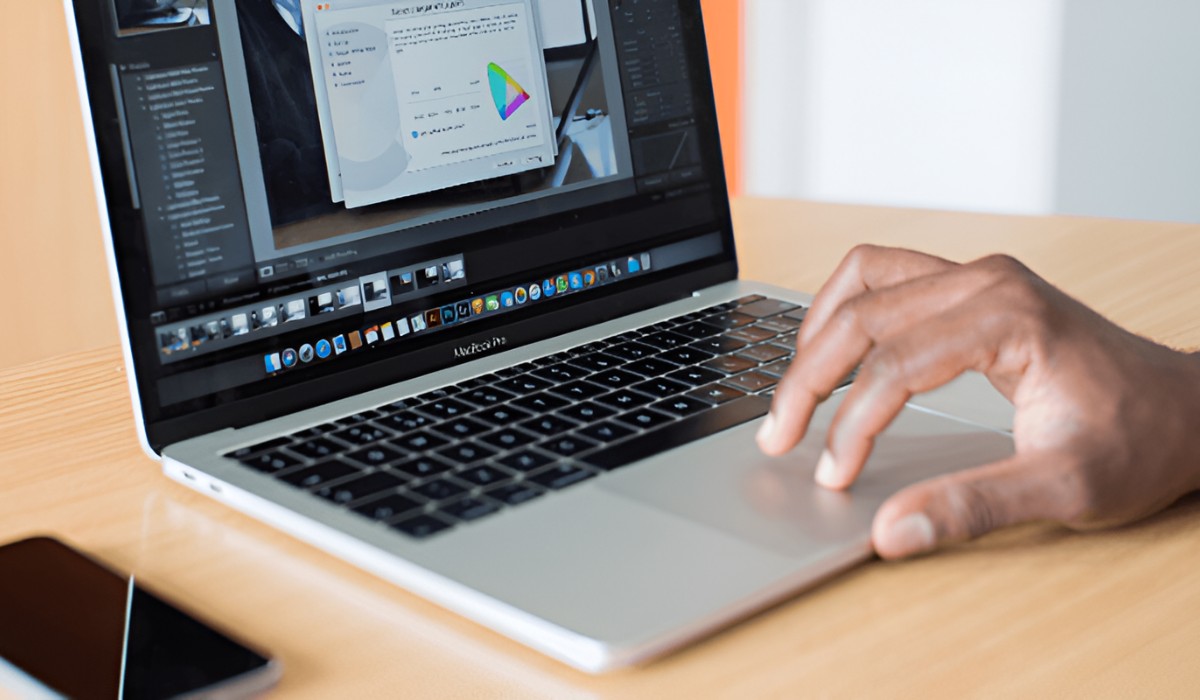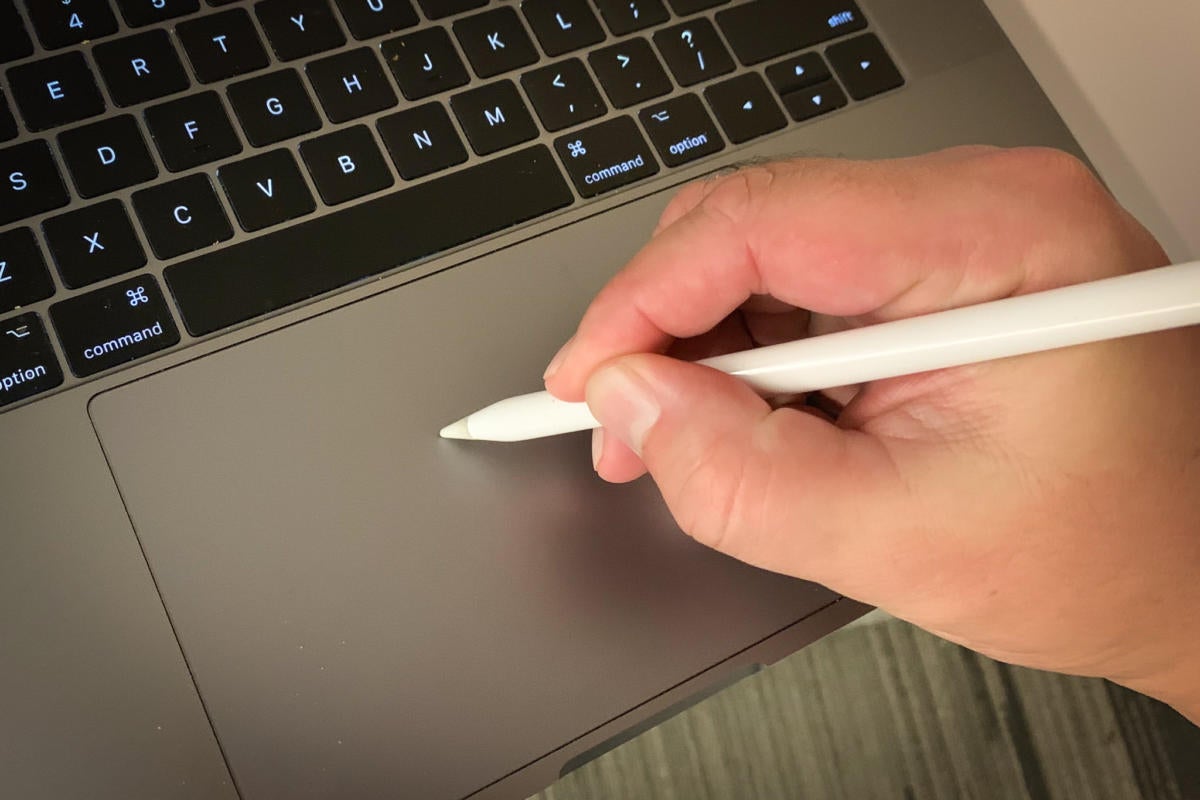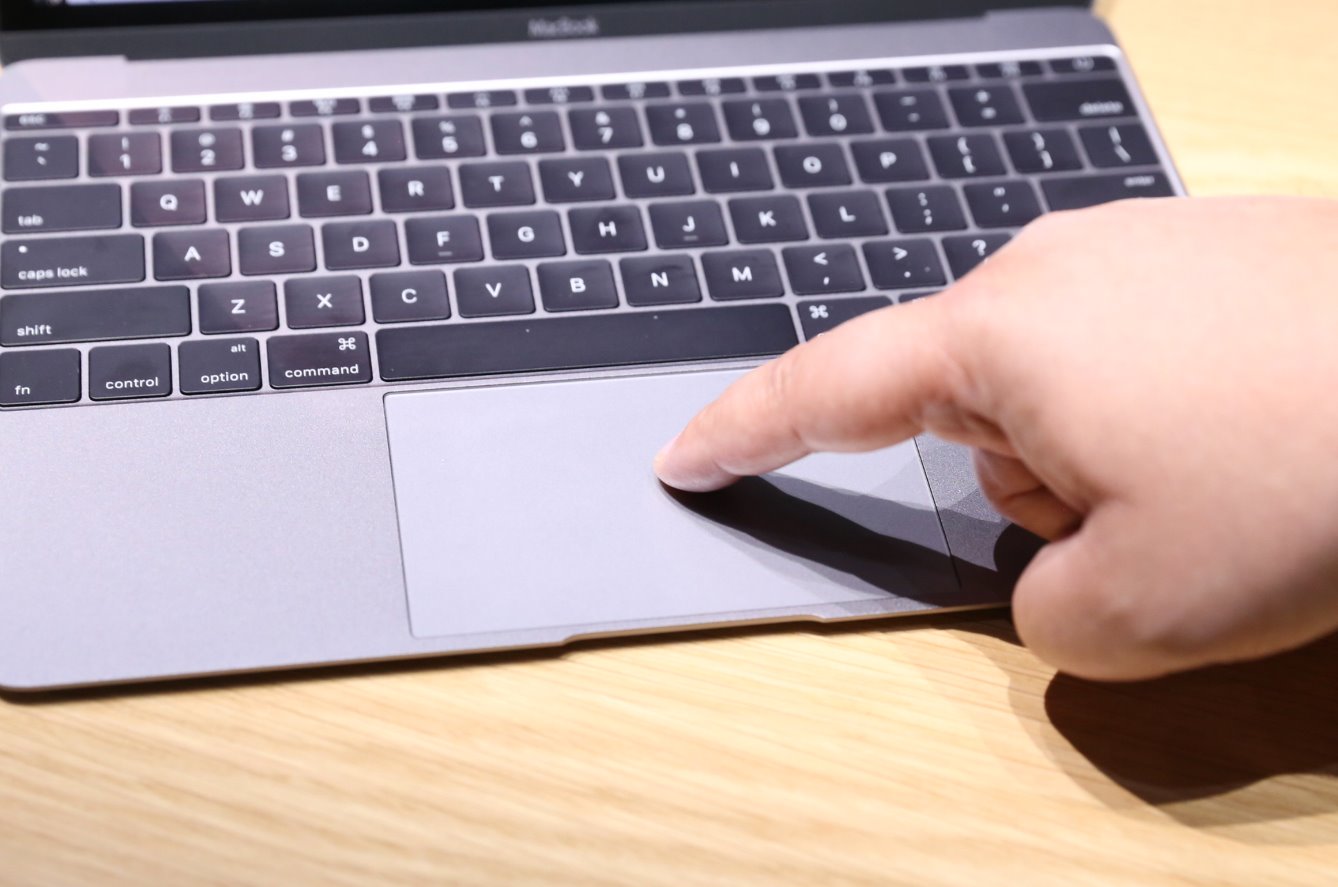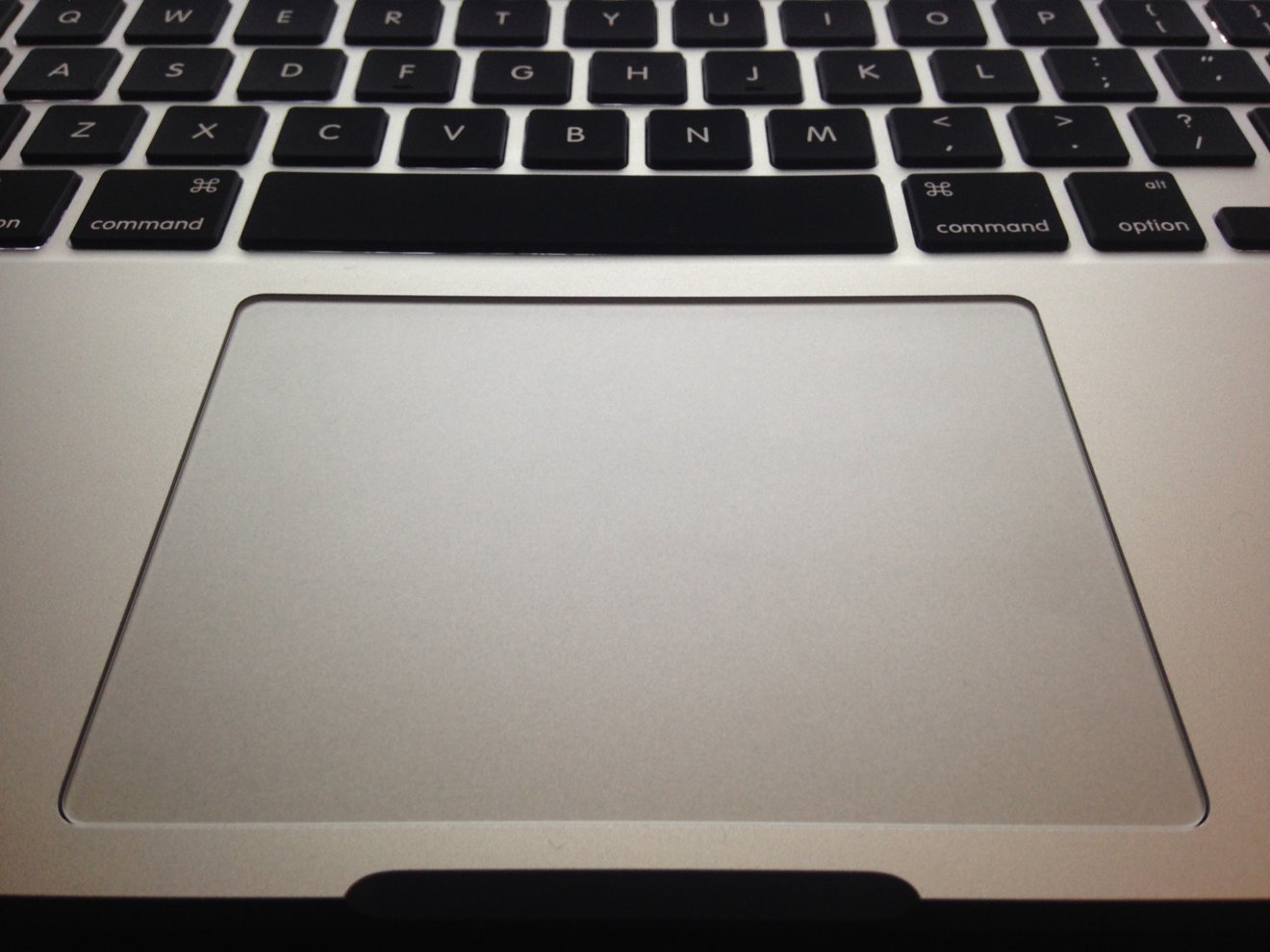Introduction
Trackpads have become a ubiquitous feature on laptops and desktop computers, allowing users to navigate and interact with their devices effortlessly. While trackpads are primarily used for pointing and clicking, there is a lesser-known technique called “drag clicking” that can significantly enhance your productivity and efficiency.
Drag clicking allows you to perform multiple clicks rapidly by dragging your finger or thumb across the trackpad’s surface. This technique can be particularly useful in various scenarios, such as selecting, dragging, and dropping files, highlighting text, or executing commands in certain applications.
In this article, we will explore the world of drag clicking on a trackpad, discussing the advantages it offers, the limitations you may encounter, and how to prepare and practice this technique effectively.
So, whether you’re a student, professional, or simply someone who wants to improve their trackpad skills, read on to discover the amazing possibilities awaiting you with drag clicking.
What is drag clicking?
Drag clicking is a technique used with trackpads that allows users to execute multiple clicks rapidly by dragging their finger or thumb across the trackpad’s surface. Unlike traditional clicking, where you lift your finger off the trackpad after each click, drag clicking eliminates the need for multiple lifts and saves valuable time.
When you drag click, the trackpad registers a series of rapid, consecutive clicks as your finger or thumb glides across the surface. This action creates a seamless stream of clicks, enabling you to perform repetitive tasks more efficiently.
While drag clicking is most commonly associated with gaming, where it can provide a competitive edge by enabling faster clicking rates, it can also be valuable in everyday computing tasks. It allows for quicker selection of multiple files, text editing, navigating through documents, and performing intricate operations with precision.
It’s important to note that not all trackpads support drag clicking. The availability of this feature depends on the hardware and software of your device. Some trackpads have built-in drag click functionality, while others require additional software or settings adjustments to enable this capability.
Now that we have a basic understanding of drag clicking, let’s delve into the benefits it offers and explore its potential limitations.
Advantages of drag clicking
Drag clicking offers several advantages that can significantly enhance your productivity and efficiency when using a trackpad. Let’s explore some of the key benefits:
- Increased Speed and Efficiency: One of the major advantages of drag clicking is the ability to perform multiple clicks rapidly. By eliminating the need to lift your finger off the trackpad for each click, you can accomplish tasks in a fraction of the time it would take with traditional clicking. This is particularly beneficial when selecting and moving multiple files, highlighting text, or executing repeated commands.
- Improved Precision: Drag clicking allows for finer control and precision over your clicks. By dragging your finger or thumb lightly or heavily across the trackpad, you can adjust the clicking intensity as required. This level of control is especially useful in tasks that demand accuracy, such as graphic design, photo editing, or drawing.
- Reduced Strain and Fatigue: With traditional clicking, repeatedly lifting your finger off the trackpad can lead to strain and fatigue over time. Drag clicking eliminates the need for frequent lifting, reducing the strain on your fingers and hand muscles. This makes it particularly beneficial for individuals who spend long periods using their trackpad, such as students, professionals, or avid computer users.
- Versatility: Drag clicking is not limited to a specific use case or application. While it is popular among gamers, its benefits extend beyond gaming. Whether you’re managing files, editing documents, working on creative projects, or navigating through complex software, drag clicking can significantly enhance your overall user experience and make tasks more efficient.
These advantages make drag clicking a valuable technique for anyone who utilizes a trackpad regularly. However, it’s essential to be aware of the potential limitations and to ensure that your trackpad is properly prepared for drag clicking. We will explore these aspects in the upcoming sections.
Limitations of drag clicking on a trackpad
While drag clicking offers numerous advantages, it’s important to be aware of its limitations to manage your expectations and make informed decisions about its usage. Let’s discuss some of the key limitations of drag clicking on a trackpad:
- Hardware and Software Compatibility: Not all trackpads support drag clicking. Compatibility depends on the specific hardware and software configuration of your device. Some trackpads may offer drag click functionality built-in, while others may require additional software installation or settings adjustments. Therefore, before attempting to use drag clicking, ensure that your trackpad supports this feature.
- Learning Curve: While drag clicking can significantly enhance your productivity once mastered, it does require a certain level of practice and skill development. Initially, you may find it challenging to maintain a consistent clicking rhythm while dragging your finger or thumb across the trackpad. It may take time to find the right balance between speed and control. However, with regular practice, you can overcome this learning curve and reap the benefits of drag clicking.
- Sensitivity and Accuracy: Different trackpads have varying levels of sensitivity, which can affect the accuracy and reliability of drag clicking. Some trackpads may register unintentional clicks or fail to detect fast-paced drag movements. This can lead to errors in selection, dragging, or executing commands. Adjusting the trackpad sensitivity settings or using external peripheral devices may help mitigate these issues.
- Noise and Tactile Feedback: Drag clicking can create additional noise compared to traditional clicking, as the continuous dragging motion generates a series of rapid clicks. Additionally, some trackpads may lack tactile feedback, making it difficult to determine the precise moment of click registration. These factors can impact your overall experience, especially if you prefer a quieter or more tactile feedback-oriented clicking experience.
Understanding these limitations will help you make an informed decision about whether drag clicking is suitable for your specific needs and preferences. In the next section, we will discuss the steps required to prepare your trackpad for drag clicking.
Preparing your trackpad for drag clicking
Before you can start drag clicking on your trackpad, there are a few steps you may need to take to ensure that it is properly prepared. The specific instructions may vary depending on your device and operating system, but the following guidelines will give you a general idea of what needs to be done:
- Check trackpad compatibility: First and foremost, verify if your trackpad supports drag clicking. Refer to your device’s user manual or search online to find information about its capabilities. If your trackpad does not support drag clicking natively, you may need to explore third-party applications or software that can enable this functionality. However, be cautious when downloading and installing third-party software, and ensure they are from trusted sources.
- Update trackpad drivers: It’s always recommended to have the latest drivers installed for your trackpad. Outdated or incompatible drivers can hinder the proper functioning of drag clicking, so visit the manufacturer’s website or use the device manager to check for driver updates. Install any available updates to ensure optimal performance.
- Adjust sensitivity settings: Most trackpads provide options to adjust the sensitivity settings. Experiment with different sensitivity levels to find the one that works best for you during drag clicking. A higher sensitivity level may allow for faster click registration, while a lower sensitivity level may provide more control and accuracy. Take some time to find the right balance that suits your needs.
- Practice proper hand position: To optimize your drag clicking technique, ensure that your hand position is correct. Rest your palm lightly on the trackpad while keeping your fingers loose and relaxed. Avoid placing excessive pressure on the trackpad, as it may interfere with the dragging motion and affect click accuracy.
By following these steps, you can ensure that your trackpad is ready for drag clicking. Once you have prepared your trackpad, it’s time to learn the different drag clicking techniques. In the next sections, we will explore two popular drag clicking techniques: thumb drag clicking and finger drag clicking.
Technique: Thumb drag clicking
Thumb drag clicking is a popular drag clicking technique that utilizes the thumb to execute rapid clicks on a trackpad. Follow these steps to master the thumb drag clicking technique:
- Position your thumb: Start by placing your thumb on the trackpad, with the tip of your thumb slightly touching the surface. Ensure that your thumb is relaxed and not applying excessive pressure.
- Engage the drag motion: Press down gently with your thumb and start dragging it across the trackpad’s surface. Maintain a consistent and smooth dragging motion. The trackpad will register a series of clicks as your thumb moves.
- Find your speed: Experiment with different dragging speeds to determine the optimal pace that allows for rapid and accurate clicks. Some trackpads may require faster movements, while others may respond better to slower, more controlled dragging. Practice and adjust accordingly.
- Develop control and precision: As you become more comfortable with thumb drag clicking, focus on maintaining control and precision in your clicking sessions. This involves finding the right balance between speed and accuracy to execute clicks exactly where you intend them to be.
Remember, thumb drag clicking may require practice to master. Start with simple tasks like selecting files or highlighting text, and gradually progress to more complex actions. The more you practice, the more efficient and proficient you will become at drag clicking with your thumb on the trackpad.
In the next section, we will explore the technique of finger drag clicking, providing you with an alternative method to perform rapid clicks on your trackpad.
Technique: Finger drag clicking
Finger drag clicking is another effective technique to perform rapid clicks on a trackpad. Follow these steps to master the finger drag clicking technique:
- Position your finger: Begin by placing your index or middle finger lightly on the trackpad’s surface. Ensure that your finger is relaxed and not applying too much pressure.
- Engage the drag motion: Gently press down with your finger and start dragging it across the trackpad. Keep the dragging motion consistent and fluid. The trackpad will register a rapid succession of clicks as your finger moves.
- Experiment with pressure: Adjust the pressure you apply while dragging to find the sweet spot that allows for quick and accurate clicks. Too much pressure can impede movement, while too little pressure may not generate sufficient click responses. Practice different pressure levels to discover what works best for you.
- Refine your control: As you gain confidence with finger drag clicking, focus on maintaining control and precision. Practice click-and-drag tasks that require accuracy, such as drawing or precise text selection. Work on developing a steady and controlled clicking rhythm to optimize your performance.
Just like thumb drag clicking, finger drag clicking may require some practice before you feel comfortable and proficient with the technique. Start with simple tasks and gradually progress to more challenging actions. With consistent practice, your finger drag clicking skill will improve, allowing you to perform rapid clicks on your trackpad effortlessly.
In the following section, we will provide some practice exercises to help you develop and refine your drag clicking skills further.
Practice exercises for improving drag clicking
To become proficient in drag clicking, it’s essential to practice regularly and fine-tune your technique. Here are some exercises that can help you improve your drag clicking skills:
- Clicking Accuracy: Start by practicing accuracy and precision. Set up a target, such as a small icon or a specific point on the screen. Drag click repeatedly to hit the target accurately. Gradually increase the speed as you become more comfortable and confident.
- Speed Training: Set a timer and see how many clicks you can perform in a specific time frame. Challenge yourself to increase your clicking speed without sacrificing accuracy. Repeat this exercise regularly to track your progress and improve your speed over time.
- Text Selection: Use text editing programs to practice drag clicking for selecting and highlighting text. Try to select words, sentences, or paragraphs quickly and smoothly using drag clicking. This exercise will help you improve your precision and control while performing essential tasks.
- Drag and Drop: Drag clicking is particularly useful for drag and drop operations. Practice dragging files or objects across the screen using drag clicking. Aim for smooth, uninterrupted dragging motions to enhance your efficiency in moving and organizing items.
- Complex Operations: Challenge yourself with more intricate tasks that require advanced drag clicking skills. For example, try creating shapes by dragging the cursor in specific patterns or perform complex keyboard shortcuts by mapping them to drag clicks. This exercise will help you push the boundaries of drag clicking and utilize its potential to the fullest.
Remember, consistent practice is the key to mastering drag clicking. Set aside dedicated time each day to work on these exercises and gradually increase the difficulty level as you progress. With regular training, you will witness significant improvements in your drag clicking speed, accuracy, and overall performance.
In the next section, we will discuss some common troubleshooting tips for addressing potential issues you may encounter while drag clicking.
Troubleshooting common issues with drag clicking
While drag clicking can greatly enhance your trackpad experience, you may come across certain issues or challenges along the way. Here are some common problems and troubleshooting tips to help you overcome them:
- Inconsistent Clicks: If you find that your drag clicks are inconsistent or not registering properly, try adjusting the sensitivity settings of your trackpad. Increasing or decreasing the sensitivity can improve the accuracy and consistency of your drag clicks. Experiment with different levels until you find the setting that works best for you.
- Accidental Clicks: Some trackpads may register unintentional clicks while drag clicking, causing unintended actions or disrupting your workflow. To mitigate this issue, you can try adjusting the pressure applied during drag clicking. Experiment with applying a lighter or firmer touch to find the right balance that minimizes accidental clicks while maintaining click accuracy.
- Jittery Cursor Movement: If you experience a jittery or erratic cursor movement while drag clicking, it may be due to a sensitivity issue or tracking problem with your trackpad. Ensure that your trackpad surface is clean and free from any debris or moisture that could interfere with the cursor’s movement. You can also try recalibrating or updating your trackpad drivers to resolve any underlying software-related issues.
- Hardware Limitations: It’s important to note that not all trackpads are designed to support drag clicking. If your trackpad lacks the necessary hardware capabilities or does not respond well to drag clicks, you may encounter limitations or reliability issues. In such cases, consider using an external mouse or exploring alternative click techniques that are better suited for your trackpad.
If you continue to experience difficulties with drag clicking despite troubleshooting, it may be worth reaching out to the manufacturer or seeking technical support for further assistance. They can provide specific guidance and solutions tailored to your trackpad model and software configuration.
With these troubleshooting tips, you can address and overcome common issues that may arise while drag clicking on your trackpad. Remember to be patient, persistent, and open to adjustments as you refine your technique.
Now that we have explored various aspects of drag clicking, let’s summarize the insights gained in the concluding section.
Conclusion
Drag clicking is a powerful technique that allows you to perform rapid clicks on a trackpad by dragging your finger or thumb across its surface. Although primarily popular in gaming, drag clicking has broader applications and can greatly enhance your productivity and efficiency in various tasks.
Throughout this article, we have discussed the concept of drag clicking, its advantages, limitations, and the steps to prepare your trackpad for this technique. We have explored two popular drag clicking techniques: thumb drag clicking and finger drag clicking. Additionally, we provided practice exercises to help improve your drag clicking skills and offered troubleshooting tips to address common issues you may encounter.
As with any new skill, mastering drag clicking requires patience, practice, and a willingness to adapt. Start with simple tasks and gradually progress to more complex operations. Experiment with settings, adjust your technique, and evaluate your progress over time.
However, it’s important to remember that not all trackpads are designed to support drag clicking, and individual results may vary. It’s essential to check your trackpad’s compatibility and be aware of its limitations before embarking on your drag clicking journey.
By harnessing the power of drag clicking, you can significantly enhance your trackpad experience and streamline your workflow. Whether you’re a student, professional, or avid computer user, incorporating drag clicking into your skill set can bring remarkable benefits and provide a competitive edge.
So, don’t hesitate to explore the world of drag clicking and unleash the full potential of your trackpad. Embrace the technique, practice diligently, and enjoy the improved speed, precision, and efficiency that drag clicking brings to your daily computing tasks.







